The Design Commission has approved the Clay + Tiffany Apartments, a 163′-10″ tall student housing tower being developed by non-profit College Housing Northwest (CHNW) in collaboration with Mainland Northwest, LLC. The sixteen story building, designed by SERA Architects, will include 259 “group living” studio apartments with shared kitchens. A 1,200 sq ft retail space is proposed at the ground level. No vehicular parking parking is proposed. 393 long-term bicycle parking spaces are proposed.
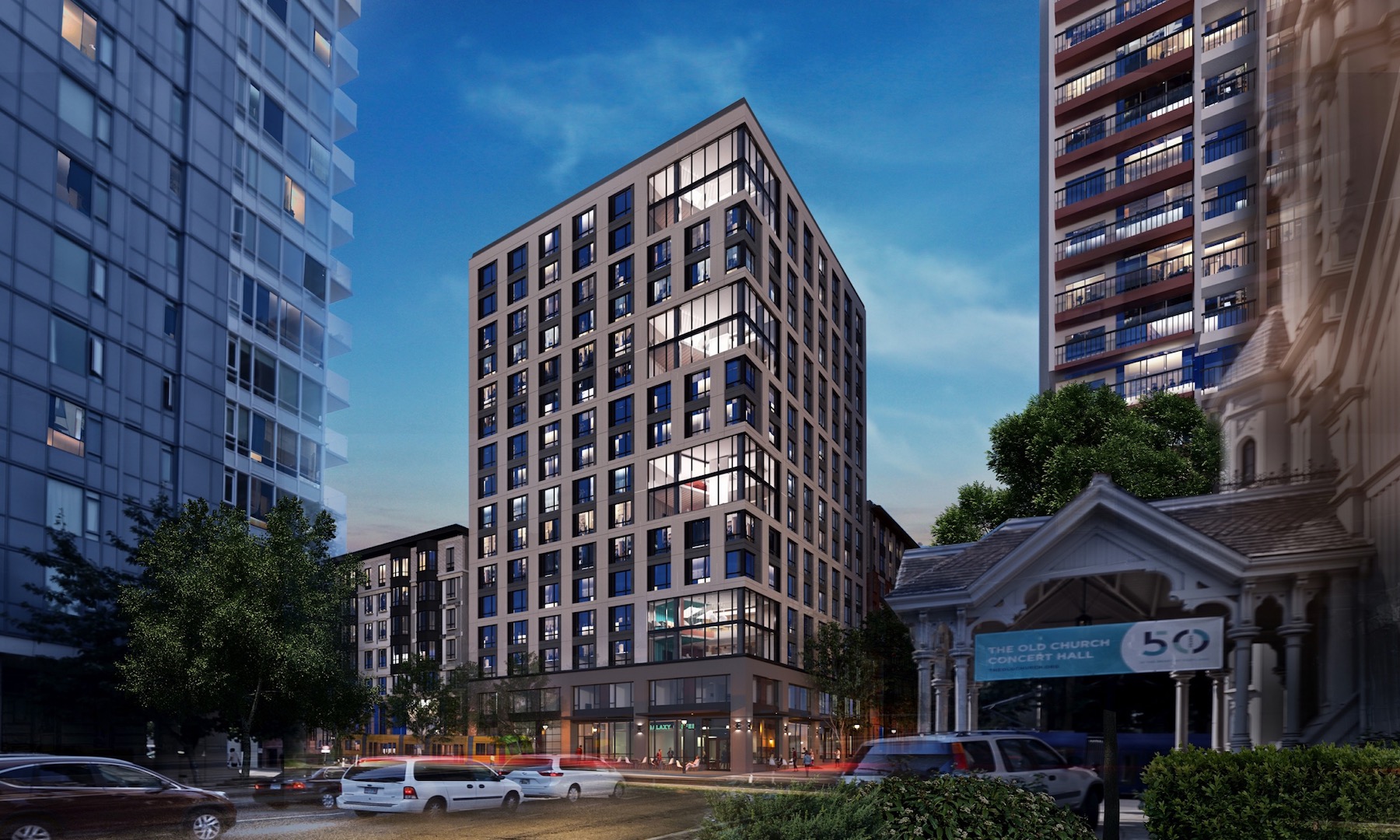
The project site is a quarter block at SW 11th at SW Clay and 11th Avenue. It is currently occupied by two apartments buildings, owned by CHNW: the 1909 Morgan Apartments, at 1110 SW Clay St; and the 1908 Claypoole Annex apartments, at 1519 SW 11th Ave. Both were surveyed as part of Portland’s 1984 Historic Resources Inventory, and given a Rank of III, indicating that they “may be eligible for listing in the National Register as part of a Historic District.”
Three other buildings by SERA architects are or will be located on the same block: the 11 Marché Apartments; the SW 12th & Market apartments; and the Cameron Apartments.
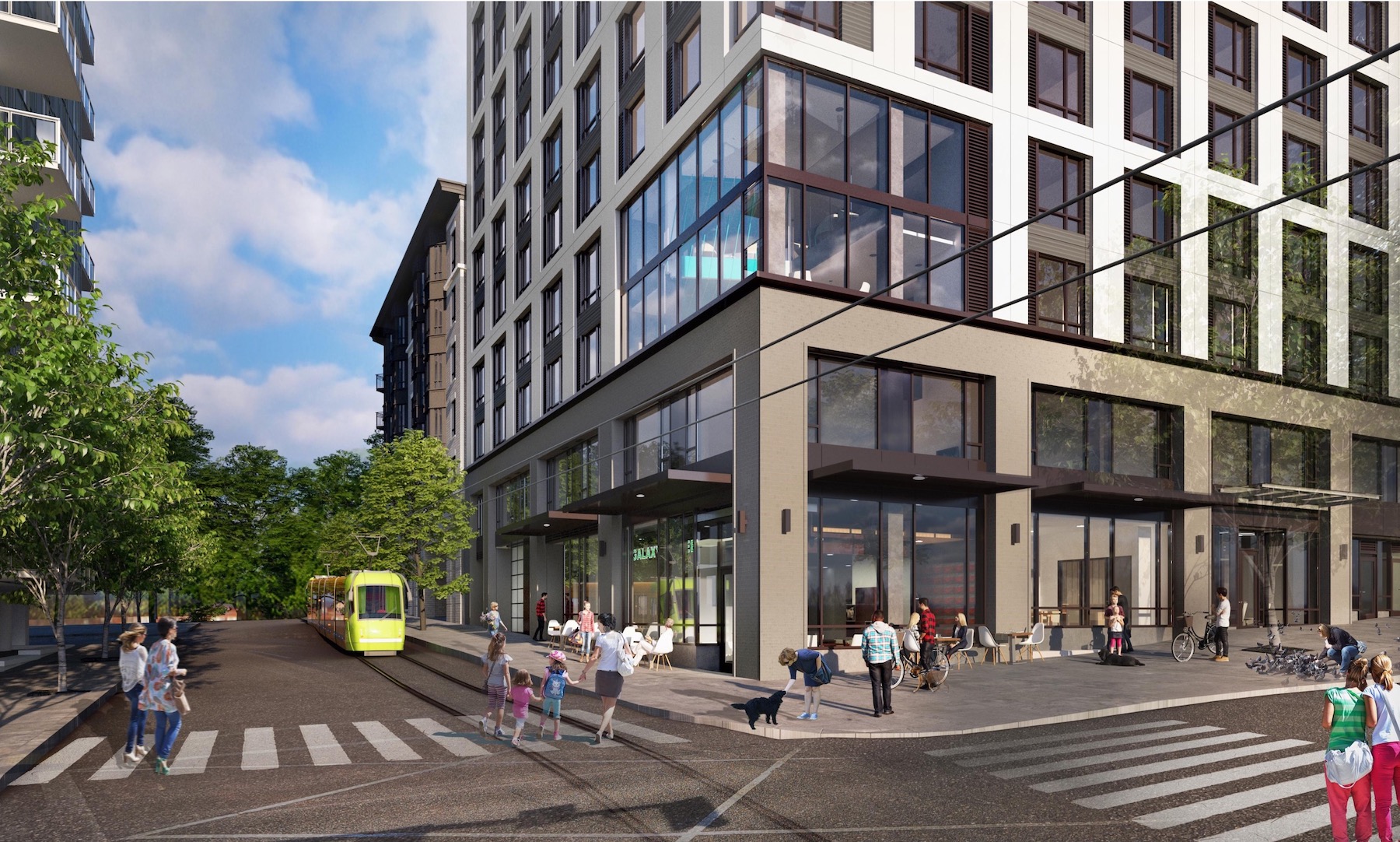
The building is arranged in an L-shape plan, with a exterior courtyard proposed at level 2 in the center of the block. Double height kitchens / community gathering spaces are proposed at the building corners on levels 3, 7, 11 and 15.
Proposed materials for the building include fiber cement panels in two colors, brick veneer, vinyl windows, aluminum storefront glazing, and steel canopies.
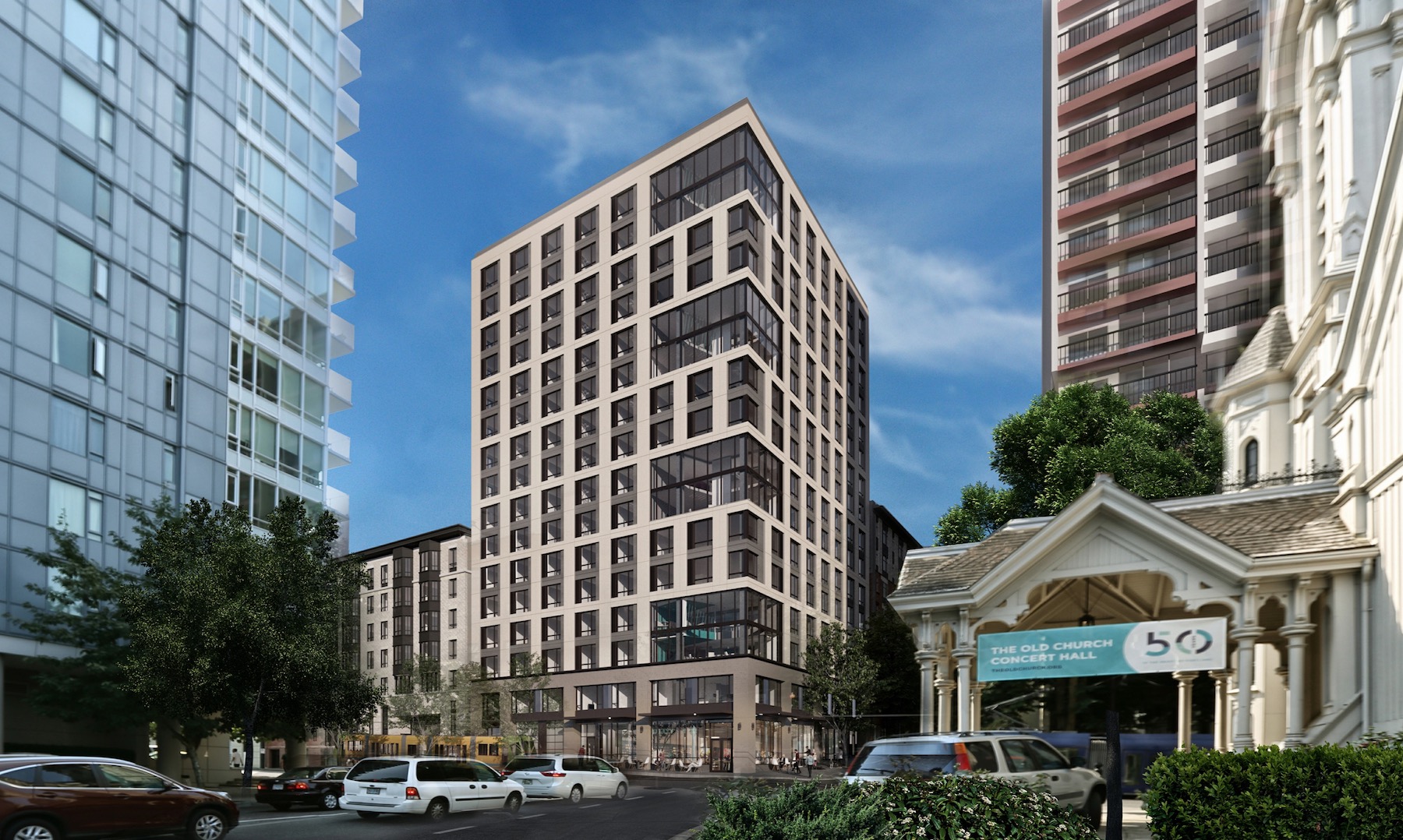
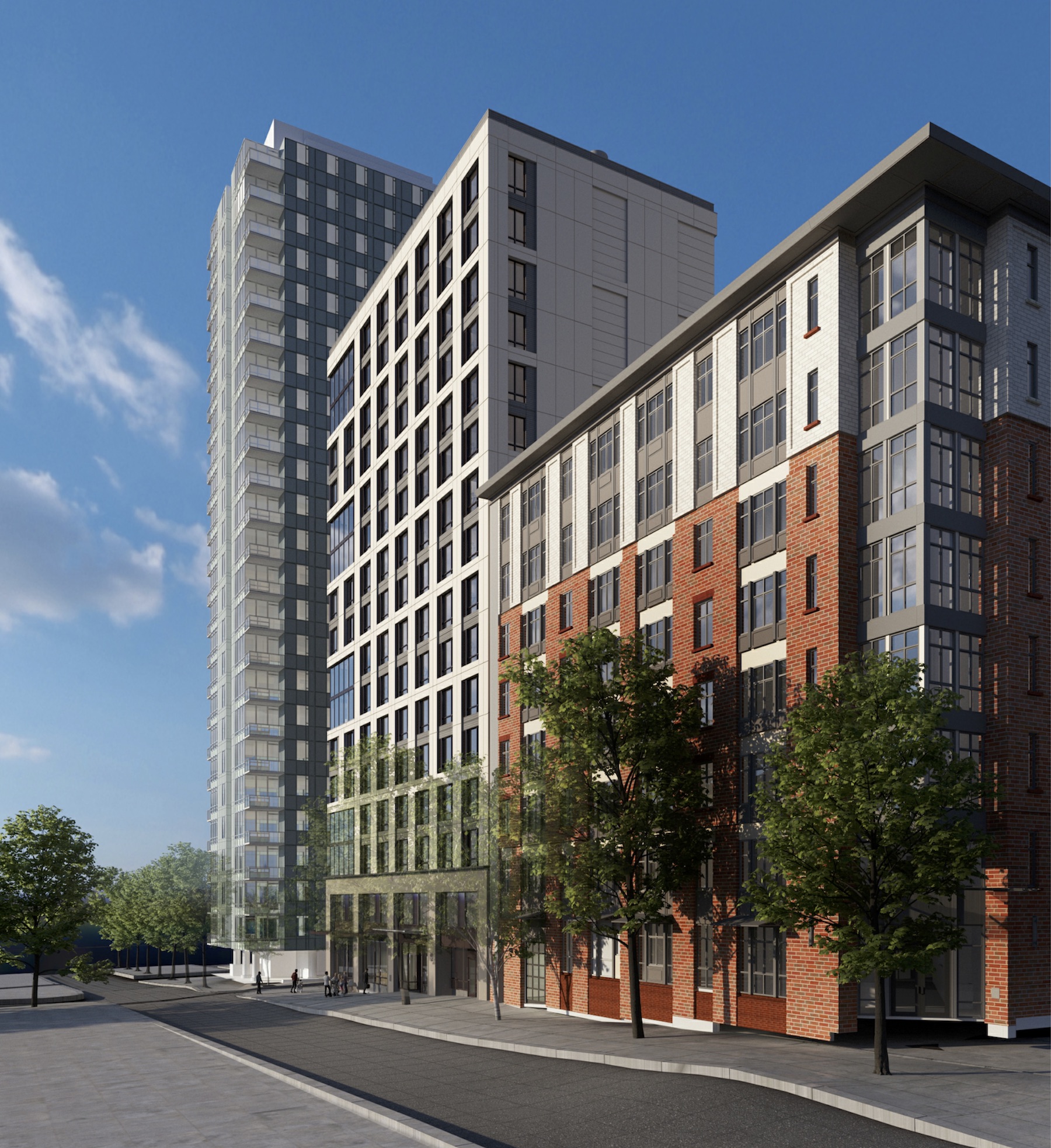
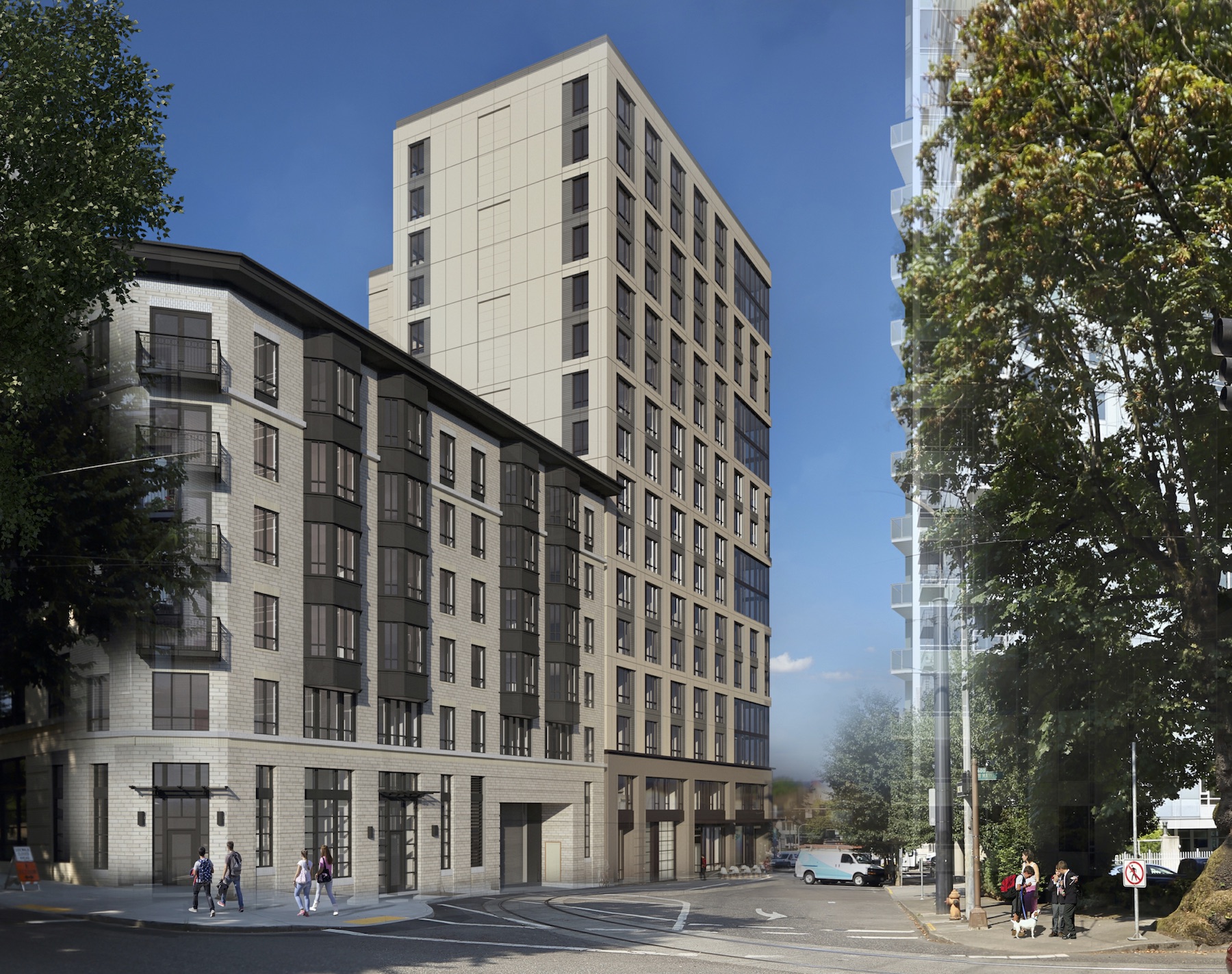
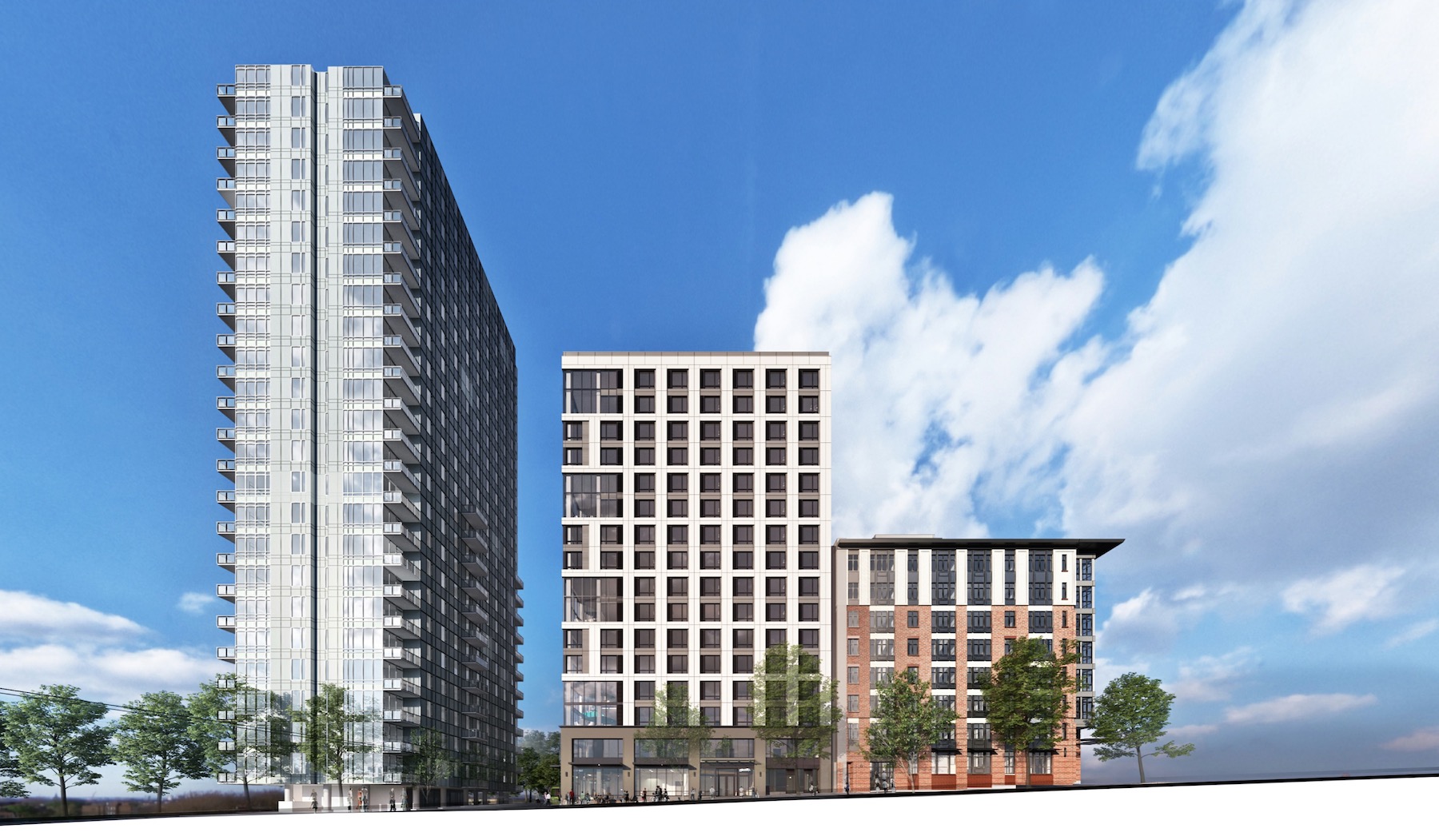
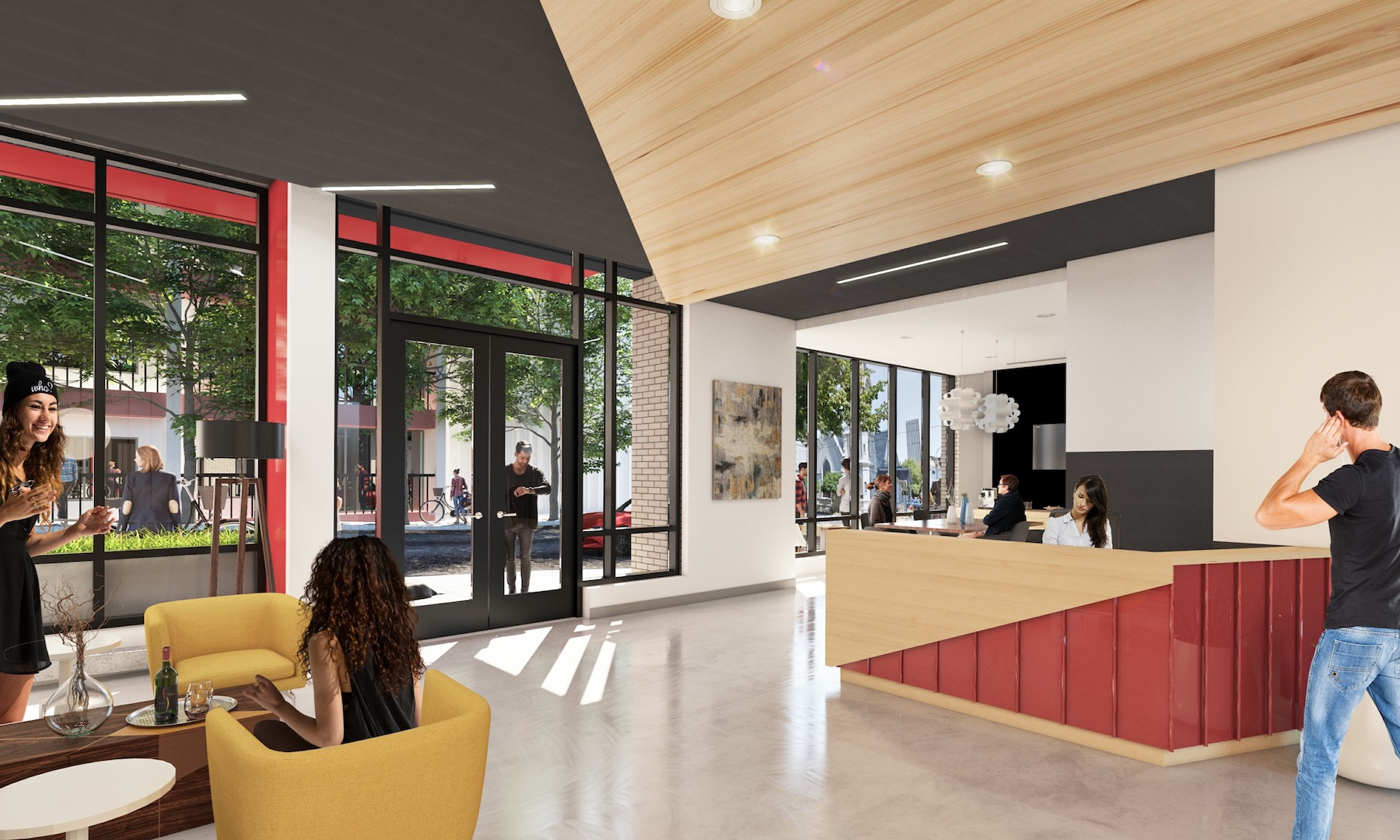
The Clay + Tiffany apartments were approved by the Design Commission on November 16th 2017, at their second design review hearing. Prior to submitting for design review the project had gone before the Commission for design advice three times in total, in April 2017 and twice in June. The project was approved in a 3-1 vote, with Commissioners Vallaster, Clark and Livingston voting in favor and Commissioner Molinar voting against the project. Before casting her vote Commission Chair Livingston explained her thinking:
Thank you very much, you guys, for engaging in this somewhat arduous process. I think the building today is really very nice and I very much appreciate the modifications that you’ve made to the first and second stories over the last couple of weeks. The public realm response is really very strong. I also think that the final design as proposed today is a coherent building; I think that you really did a fine job with [guideline] C-5 “Design for Coherency”. The expression of the two story spaces at the corners activates that corner in a way that is in some ways comparable to what would happen if there were balconies at that corner. Overall I think it’s been a really great design process and the building is a strong response to a changing context.
Building permits will need to be applied for before construction can start.
Drawings
- Plan – Site
- Plan – Level 01
- Plan – Levels 2 & 3, 7, 11, 15
- Plan – Levels 4, 8, 12, 16 & 5-6, 9-10, 13-14
- Plan – Roof
- Elevation – North
- Elevation – East
- Elevation – South
- Elevation – West
- Section
- Section

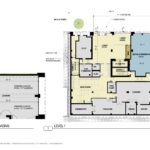
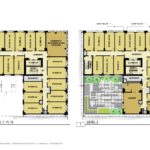
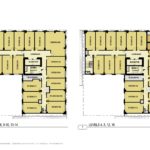

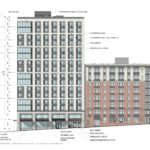
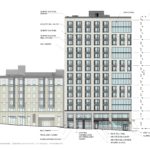
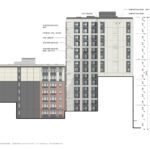
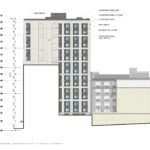
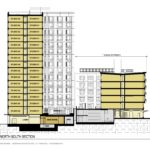
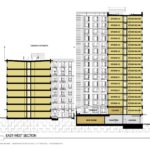
Portland is losing its soul.
The perfectly functional and great looking building that will be torn down is a total shame!
It feels like some people may have this very phrase stuck on “copy” waiting for a “paste” every time a new building is proposed. What is this even suppose to mean? Is our outdated building stock the soul of the city? So it is not the people or the businesses that occupy buildings? I also don’t get how you expect to have a place with soul that is not constantly changing. If you want a place that does not change fast then consider the soulless suburbs of America. I did not lose my soul when I stopped wearing oversized band shirts and instead put on properly sized shirts from nice retail stores. I am the same awkward introvert I always was I just look and feel nicer now.
Portlandtimbo, are you a first year architecture student? Or a SERA employee? You sound like a complete fool. Portland is not defined by merely the current crop of inhabitants and businesses. Do you think people would be visiting Athens or Rome to see shitboxes made of vinyl windows and cement panels? Of course not, history matters. Save your blathering for your next paper that’s due.
No but I am a first year masters of urban and regional planning student. I have also been a full time carpenter for 16 years installing high end Marvin windows and doors. Meaning I understand the economics of certain building materials in the context of increasing labor costs, as well as the theory behind cities and urban places. Do you want relatively affordable housing? Then you better start enjoying vinyl windows because they are more than half the cost of wood windows and require zero long term maintanence costs. You want buildings that don’t don’t have dry rot and mold problems plus you don’t want to use toxic asbestos siding, well hello cement board.
Breaking news, no one visits Portland to see our early 20th century brick apartments. They come for crappy voodoo donuts, good beer, amazing people, and the great outdoors. By the way these brick buildings will be gone the second the big one hits us. Does that mean our history is gone and no one will visit the city anymore?
Also Greeks don’t move to Athens because of the history, they move there because of jobs. We may visit there for the history but the second people stop visiting it for the history (which won’t happen, in this specific case) they will stop maintaining that history. They keep it because it is a driver of their tourist industry. Buildings are not what drive our tourist industry. Our food, beer, and absurd hipster beard competitions. In other words our culture.
So you’re a grifter? destroy one city and then move onto the next?
And the vinyl windows will warp within 10 years. Quality should last….
Jeremy, easy on the personal attacks. The only one who looks like a fool is you.
I’m pretty sure you changed. I would also say that there are very few people who knew what Portland was just a few years ago and see Portland today and think it was an improvement.
All these apartments, all the changes being done for people who will only call Portland home for a short time, or in the case of investors, have never even been to Portland…..
It takes on average 7 years for neighborhood to have a complete turnover in population. Meaning if 1000 people live in a neighborhood then 1000 people will have mov d out and in within 7 years. We are all temporary residents. If we are going to shape policy around the limited few who never move we will be making a mistake because those people are showing themselves adverse to change which is the very state of being for an urban environment.
If you separate out parking complaints everyone I talk to knows it to be a better place now then years before. As a SMILE (sell wood neighborhood association) board member I am intimately familiar with complaints and deal with very long term residents all of which will concede the food is better and so is the economic prosperity. They just want their private street parking spot.
I’m sure the seismic retrofitting would be costly. Perhaps, as someone suggested, conversion to condos would make it pencil. This is one of a few buildings with the quarter-circle balconies remaining. It is a shame to tear down such large buildings for somewhat larger buildings. But that’s economics for you.
Why is traditionalism the new radicalism? Is contextual respect really something Portland wants to discard? I’m so disappointed by the Portland Design Commission. Since you’d have to retrofit the structure anyway, why not continue the century-old design aesthetic up from the original base? That way you are respecting the people that formed what the city originally looked like. Every building you demolish is a spit in the face of the brilliant architects that made Portland what it is, and it follows that we are destroying our cultural/historical relevance in doing so.
A culture won’t be judged by what it creates, but by what it destroys. Shame.
I cannot be entirely sure but I bet it is true that the buildings getting demoed here replaced even older buildings a long time ago. Have you met these original architects of Portland? Do you know for a fact that they expected their designs to live for infinite? I doubt it. In fact I bet the opposite. Every architect is trying to some degree define a time period knowing that time moves forward. Meaning their grandchildren will do something entirely different and even though they don’t have to like that new style the generation that grows up with the new style will like it, because it defines them.
Downtowns used to be the place where change was robust and constant. Why are we now afraid of what makes a place great? So I would suggest there is no spitting. I suspect the ghosts of those old architects are tipping their hat to new generation of architects knowing that in their time they were not seen as brilliant architects but rather crazy people designing ugly buildings. Art is like wine I guess (i am sure someone has said this already) it gets better with time.
Maybe we should all stop being so offended by new stuff, it is less stressful.
Sorry one more comment on your last sentence. That is absurdly incorrect. Please provide examples that support this. I cannot think of a single culture that has been defined by the buildings they destroyed instead of what they created. Lets see where this logic leads us. So if we want to avoid being seen as destroyers we need to not touch anything in Portland already built and instead must accommodate growth solely by using unused land. Well I would suggest that would be a recipe for our downfall as a decent city. Either our economy would stagnate or it would mimic San Francisco where it becomes an extremely boutique city limited to a select few rich people.
Portland is becoming more and more expensive, not because we aren’t changing, but because we’re tearing down all the old, less expensive to live in buildings and only throwing up low cost, high rent garbage. Want to keep Portland someplace where everyone can live, stop building overpriced soulless housing. Just look at the kind of businesses that are in older buildings, and then look at the ones in the highly designed new garbage being built. We’re building plenty of locations for vegan cupcake shops, handmade organic card shops, and no locations for a corner deli with affordable sandwiches. They have to sell artisinal hand crafted sandwiches for $20 to pay the ridiculous rents.
We’re building housing with minimal kitchens because the target tenant eats out at fancy restaurants all the time. What about the people who live here that don’t? Why are we curating this city only for one type of person?
We’re not building housing for families, we’re building housing for singles. San Francisco didn’t become the city it is, it was built out that way. Every building put up in the last 30 years helped to create that gentrified rich person’s playground. Buildings get designed with a potential tenant in mind. We need to stop building things that only appeal to the people that are destroying the fabric of this city. People who will move on as soon as this place becomes as soulless as the last place they lived.
billyjo, as a longtime resident of Portland I sympathize with you, but you’re wrong. The rent’s too high because we haven’t been building enough apartments to keep up with the amount of people moving here. The rent a property owner charges has nothing to do with how old the building is and everything to do with how much people are willing to pay for it. Like it or not, these ‘low cost, high rent’ buildings will make Portland a more affordable city.
I do like looking at some of these older buildings though and get a little upset when they’re torn down.
So if we build only mansions, there will somehow magically be places for regular people to live? Vacancies at most of these building are so bad that many units either sit empty for months and months or get used for short term rentals. But somehow building more high end housing with solve everything? Not buying it.
These old buildings that you are defending were not originally built to be affordable. They were built for the high end market as basically all new housing is because new construction is expensive. When, like in San Francisco, you build 4000 new housing units in the same time period that 50,000 new jobs move into the city, old crappy places get bought or rented by people who can afford much nicer places. That is why people who own Tesla’s live in mobile homes in silicon Valley.
As for mansions, I despise them. But when a place is zoned for expensive housing you will get expensive housing. Free up our single family zoning to allow for much denser and sustainable multi-family housing and then that insane land value gets distributed more broadly. Otherwise mansions are the only thing that pencil out in neighborhoods like Eastmoreland.
I would recommend also that you back off of this term soul and soulless. I hate modern art but would never call it soulless I just say it is not my style. Just a suggestion.
then why is it that every time an old house in neighborhoods like Eastmoreland gets torn down, 2 much more expensive houses get built? Where in this city have they torn down 1 house, divided the lot and the houses built weren’t more expensive than the original house that was torn down? Change zoning to allow a 5000 square foot lot to be divided and you get 2 mansions on 2500 square foot lots.
This is nice looking building. Great idea to tear down the correct eye sore
Yes, very unique – fiber cement panels in two colors, brick veneer, vinyl windows, aluminum storefront glazing, and steel canopies. A timeless design that will define this corner of downtown for centuries.
In 10 years when the building is falling apart and nobody wants to pay the high rent anymore, then what? a city of slums?
Which buildings built circa 2008 are now falling apart and have become slums?
The first one that instantly came to my mind after reading your comment is “The Civic” off Burnside. It was built in 2007, close enough to 2008, yeah? Check out Yelp reviews for this building too. https://www.yelp.com/biz/the-civic-condos-portland-2?utm_campaign=www_business_share_popup&utm_medium=copy_link&utm_source=(direct)
You’re basing that off one yelp review from a person who complains about “8 years of Obongo” and “heroine addicts”?
@PortlandTimbo, I stand by my use of the term “losing soul”. I do think that finely crafted and historic buildings that are in good repair contribute to the character of our fair city and collectively constitute Portland’s “soul” from a built environment perspective. Yes, most of the time something new replaces something old, but in this instance there are many other structures I would consider replacing before this one.
I don’t live very far from the building in question. Given the surrounding structures, I don’t think replacing it is a bad idea. Currently, that corner is rather gloomy and unwelcoming. I’ve lived in this neighborhood, off and on, since 1985. I used to live behind the Benson mansion which was later moved to PSU campus and was replaced by a glass and steel tower. I don’t think it’s ugly and I like the contrast with the Old Church across the street, but where the current brick building didn’t look out of place when it was across the street from the Benson house, it looks very out of place contrasted to the Benson tower; in fact, it looks almost derelict.
Portland has never not changed. Just look at what downtown looked like in the 50s before Tom McCall Park was developed.
No trees? I thought all new buildings were subject to a street tree code? None on 11th, none on Clay.
They would block that beautiful building.